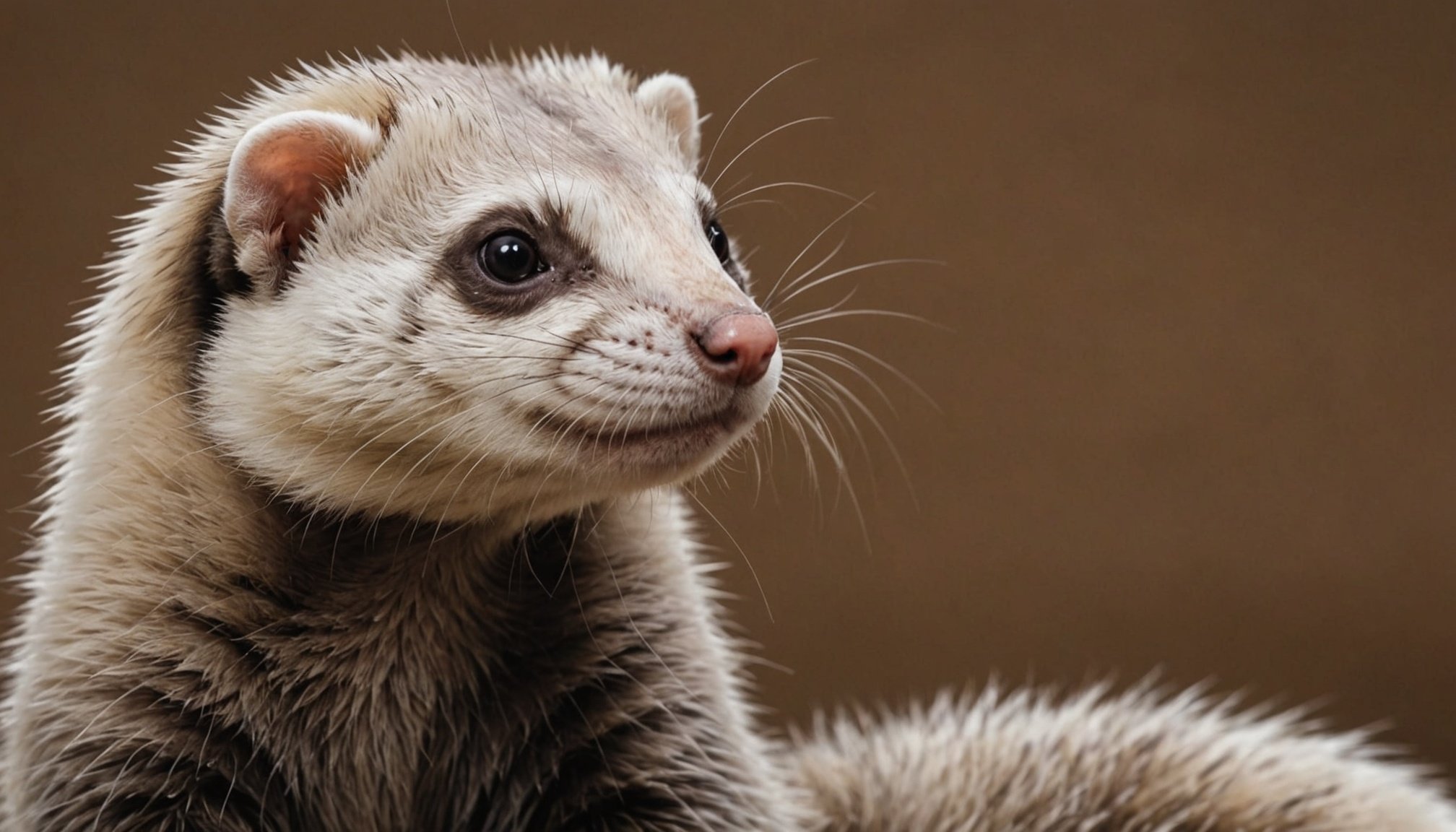Understanding Ferret and Bird Behaviors
When planning to introduce ferrets and birds, understanding their distinct animal behavior is crucial. Ferret traits typically include curiosity, playfulness, and sociability. These small mammals are energetic explorers, often indulging in burrowing and stealing small objects. They communicate using a variety of sounds and body postures, which allows one to gauge their comfort levels in new situations.
Birds, on the other hand, exhibit behaviors heavily influenced by flight instincts and territoriality. Common bird traits encompass alertness, vocalizations, and a tendency to establish dominance hierarchies. Understanding these behaviors can guide their safe introduction to ferrets. Birds also use a range of sounds and visual cues to express moods, such as fluffing feathers or sharpening beaks, which signal potential stress or aggression.
Also to read : What are the best ways to introduce a new pet hamster to your existing pets?
Body language plays a critical role in assessing comfort and preparedness for interaction in both species. Recognizing signs of anxiety or aggression is essential. For example, a ferret displaying a lowered body stance may be feeling defensive, while a bird nervously flapping wings suggests unease. By familiarizing oneself with these behaviors, one can facilitate smoother and safer interactions between these two distinct species.
Preparing for the Introduction
When planning to introduce animals such as ferrets and birds, creating a secure and controlled environment is critical. Start by designating safe spaces where each animal feels comfortable. This minimizes stress and promotes confidence during initial encounters.
Also to see : How can you effectively train your rabbit to use a litter box?
Utilize relevant preparation tips to ensure readiness for interactions. Equip the environment with non-threatening elements like bedding or toys that carry each other’s scent. This method helps both animals become accustomed to unfamiliar smells, fostering a sense of familiarity before any face-to-face meetings.
Examining each pet’s readiness is paramount. Watch closely for signs demonstrating their comfort levels. Key indicators include relaxed body language in ferrets and calm, non-aggressive behavior in birds. Identifying these signals helps tailor the introduction process effectively.
A safe environment is not only about physical setup but also about mental preparedness. Gradually increase exposure by managing visual interactions before physical contact. By doing so, one can mitigate risks associated with unexpected aggression or fear reactions.
In summary, by understanding and implementing these steps in the introductory process, caretakers can ensure a positive experience in combining these diverse species under one roof.
Step-by-Step Introduction Process
Successfully integrating ferrets and birds involves a meticulous introduction process that emphasizes graduality and supervision. Caretakers should ensure that each step is progressed with patience, allowing both species to adjust safely to their new companions.
Initial Scent Exchange
To initiate, focus on gradual exposure by swapping bedding or toys between both animals. This introduces each animal’s scent in a non-threatening manner, helping them to associate new smells with their environment comfortably.
Controlled Visual Interactions
Once they are accustomed to each other’s scent, supervised meetings should begin with controlled visual interactions. This entails allowing them to see each other while maintaining a physical barrier. This step nurtures curiosity without risking any physical altercation and assesses their responses for readiness.
First Physical Meetings
When both animals appear calm and curious rather than aggressive, arrange brief face-to-face meetings under close observation. During these interactions, remain alert for signs of distress or aggression. If any negative behaviors surface, gently separate them and reassess the approach. This staged exposure ensures that both animals feel secure, increasing the chances of forming positive relationships.
Troubleshooting Common Challenges
Introducing ferrets and birds can sometimes lead to unexpected concerns, where problem-solving skills come into play. By understanding potential behavioral issues, caretakers can use effective strategies to mediate these interactions.
Identifying Stress and Aggression
Ferrets might show stress by backing away or hissing, while birds could demonstrate anxiety by rapid wing flapping or loud vocalisations. Recognising these cues is essential to act promptly and ensure safety during this delicate period.
Strategies for Calming Interactions
When tensions rise, employing safe interventions is crucial. Techniques such as temporarily increasing the distance between the pets or using a soothing voice can help deescalate tense situations. Introducing enrichment activities, like puzzles or new toys, can serve as distractions, aiding relaxation.
Adjusting the Introduction Process
Each pair of animals is unique, and responding to their specific needs by modifying the approach as required is foundational. Adjusting the introduction process by reverting to earlier steps or slowing down the pace can nurture confidence and comfort in both ferrets and birds. Utilising these adaptive strategies, it is conceivable for animals to coexist peacefully, despite initial challenges.
Ongoing Management of Cohabitation
After the initial introductions, establishing harmonious coexistence between ferrets and birds requires consistent long-term care and vigilance. Monitoring their interactions ensures safety and detects any behavioral changes that might lead to tension. Regular check-ins help assess the ongoing dynamics and make adjustments as needed.
To foster positive relationship building, create routines that support both species’ wellbeing. Incorporate varied activities and enrichment to keep both ferrets and birds mentally stimulated, reducing the likelihood of disruptive behaviour due to boredom or stress.
Maintaining separate, comfortable spaces for each animal is crucial, allowing them to retreat when necessary. Additionally, implementing basic safety measures, such as supervising playtime and securely storing hazardous materials, contributes to a balanced environment.
Building trust gradually:
- Consistently reward positive interactions with treats or praise.
- Be patient in observing their social dynamics and intervene if aggression resurfaces.
Establish a predictable routine to ease potential concerns. Taking these proactive steps, both ferrets and birds can learn to live together peacefully, enjoying shared spaces while respecting their unique needs. This commitment ensures both species continue to thrive side by side.
Expert Insights and Research
Exploring expert insights provides valuable guidance when introducing ferrets and birds, emphasising informed decisions to promote interspecies relationships. Specialists in animal behaviour underline the importance of understanding the animal dynamics, advising patience and gradual exposure to minimise stress.
Scientific studies highlight the potential for harmony between species when facilitated correctly. Research indicates that ferrets, known for their playful nature, can cohabit with birds if introductions are carefully managed. This involves structured steps guided by anecdotal evidence and expert advice, tailored to each animal’s temperament.
Interspecies introduction benefits from considering previous successful cases, where animals have thrived together. These experiences underscore the effectiveness of relationship-building techniques, such as mutual activities and separate escape areas, ensuring their comfort and security.
Expert advice often focuses on recognising and respecting each pet’s unique needs to prevent territorial disputes or stress-induced behaviors. Experts suggest closely observing body language and interactions over time, adapting strategies as necessary to maintain a peaceful coexistence.
By combining scientific understanding with practical experience, caretakers can confidently approach ferret and bird introductions, fostering a harmonious living environment.










